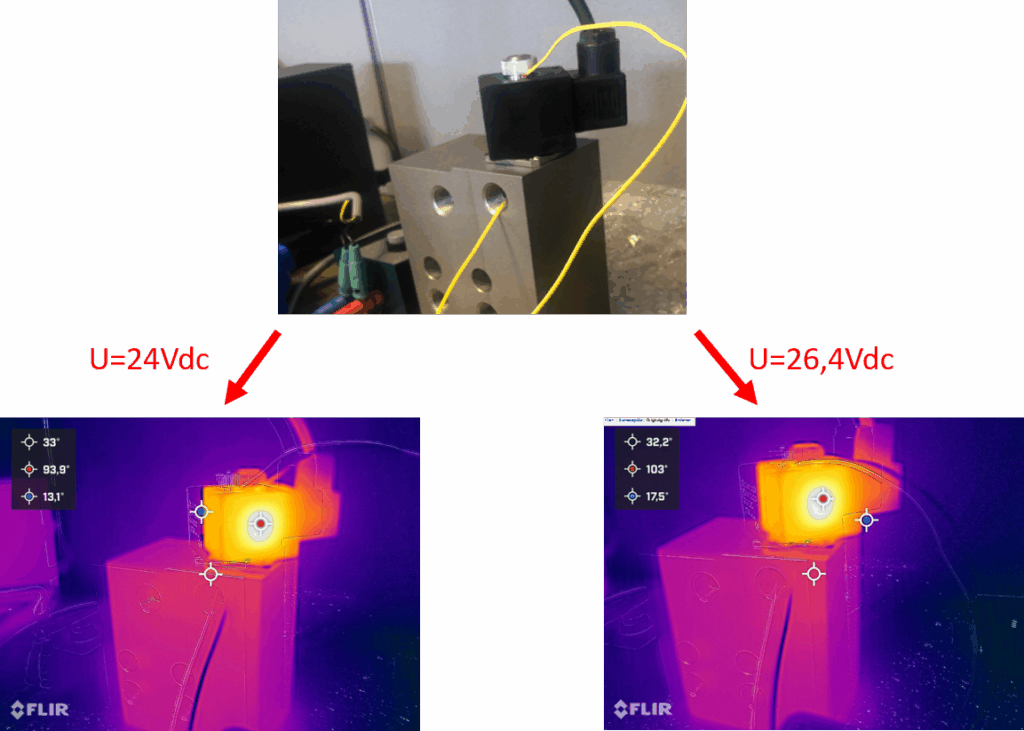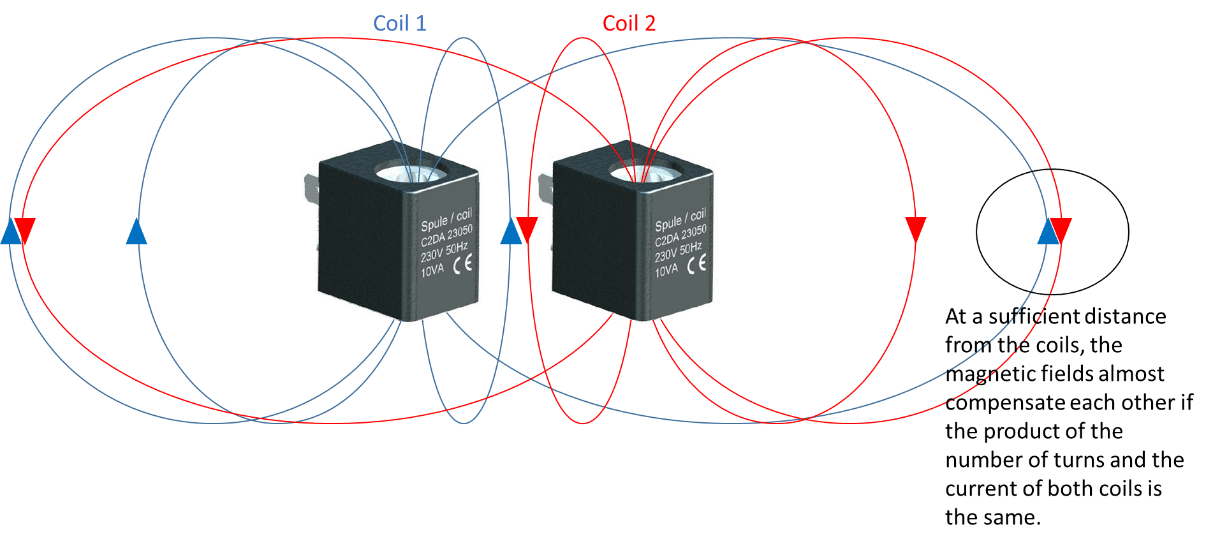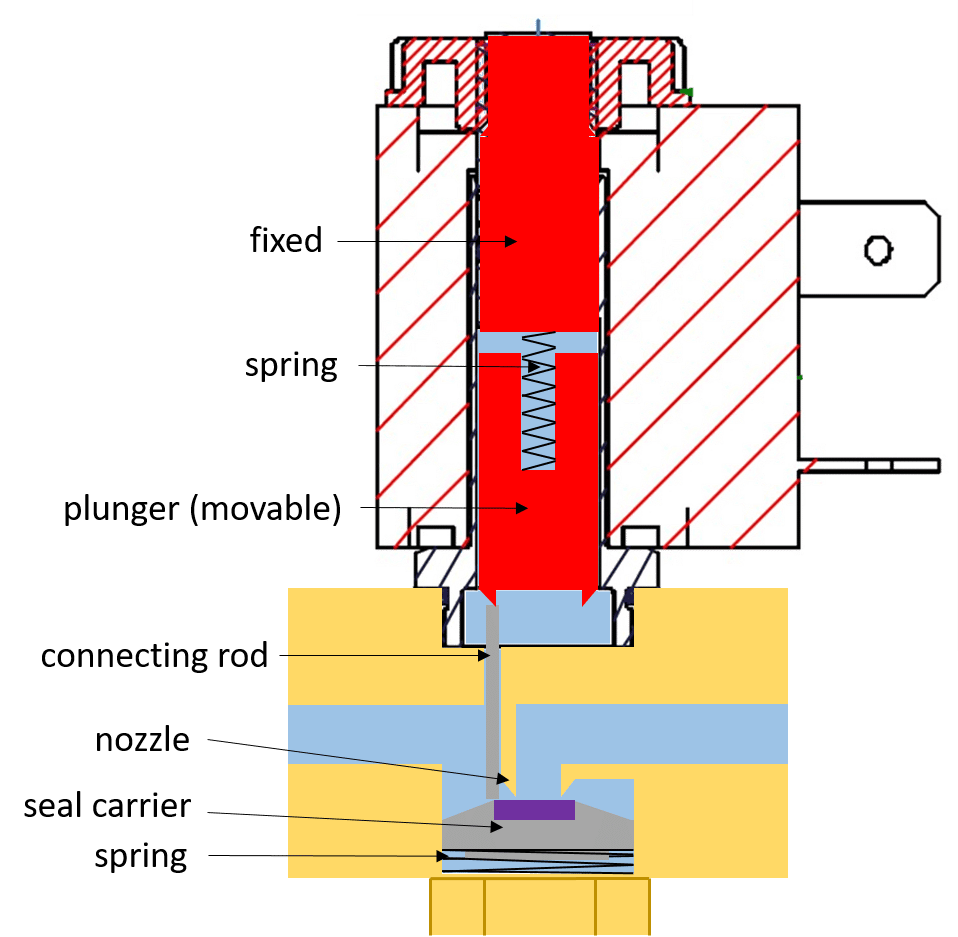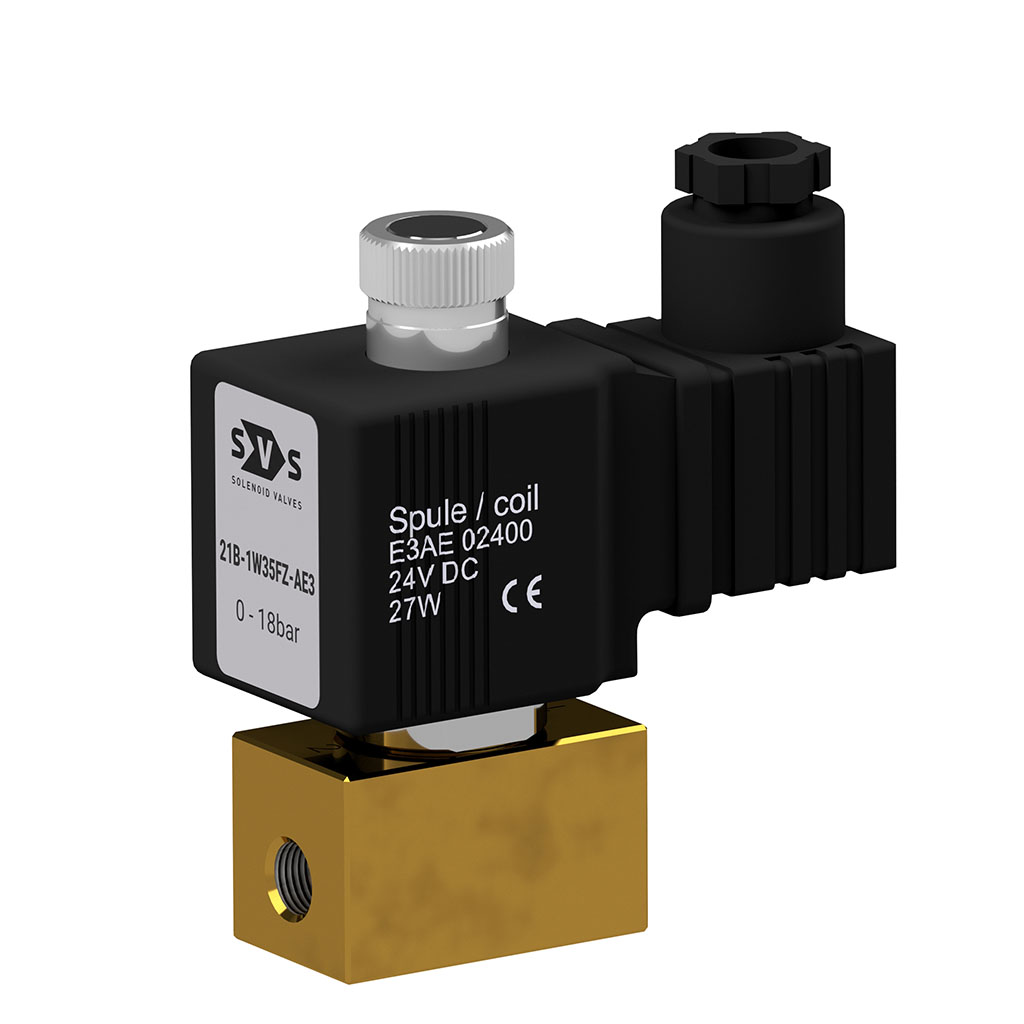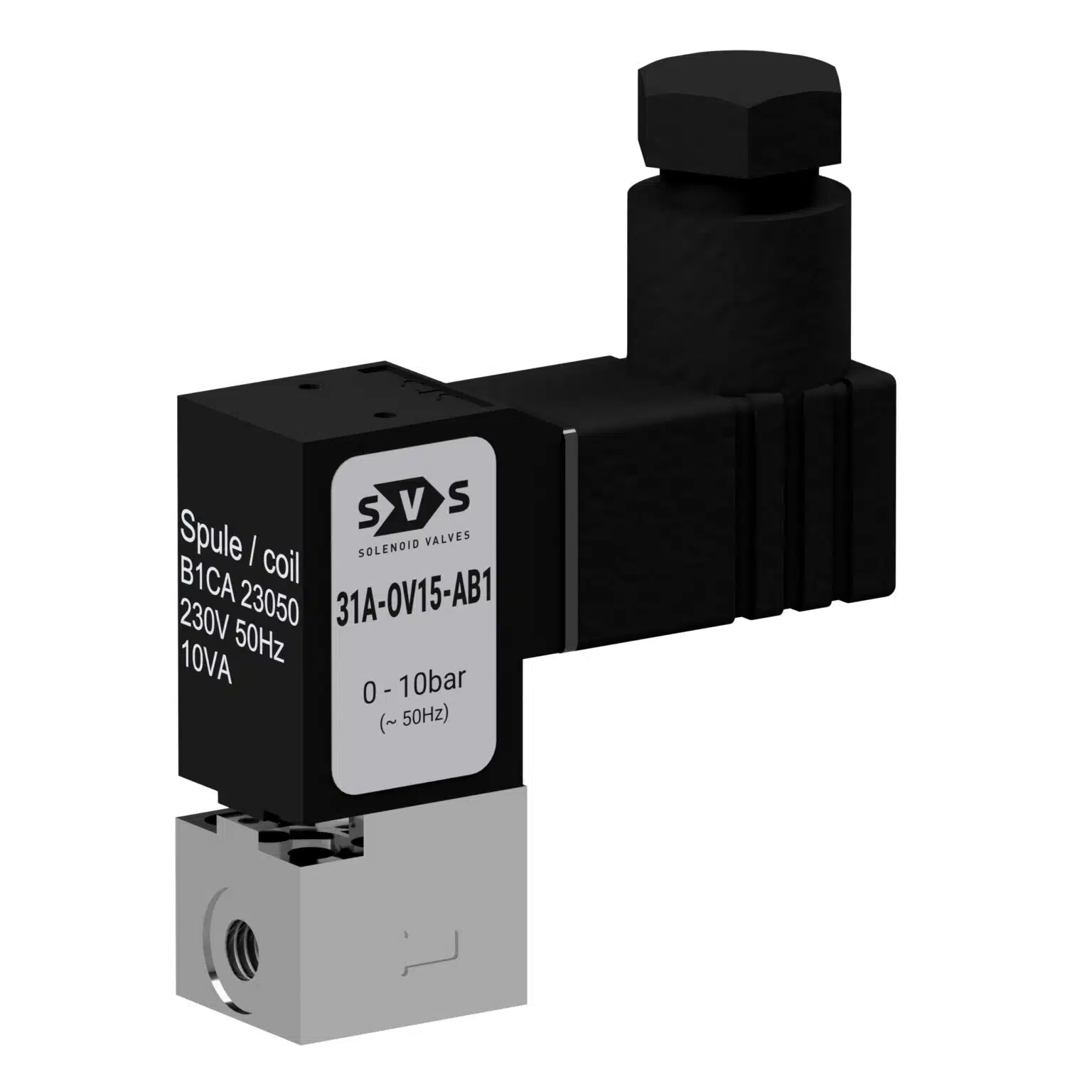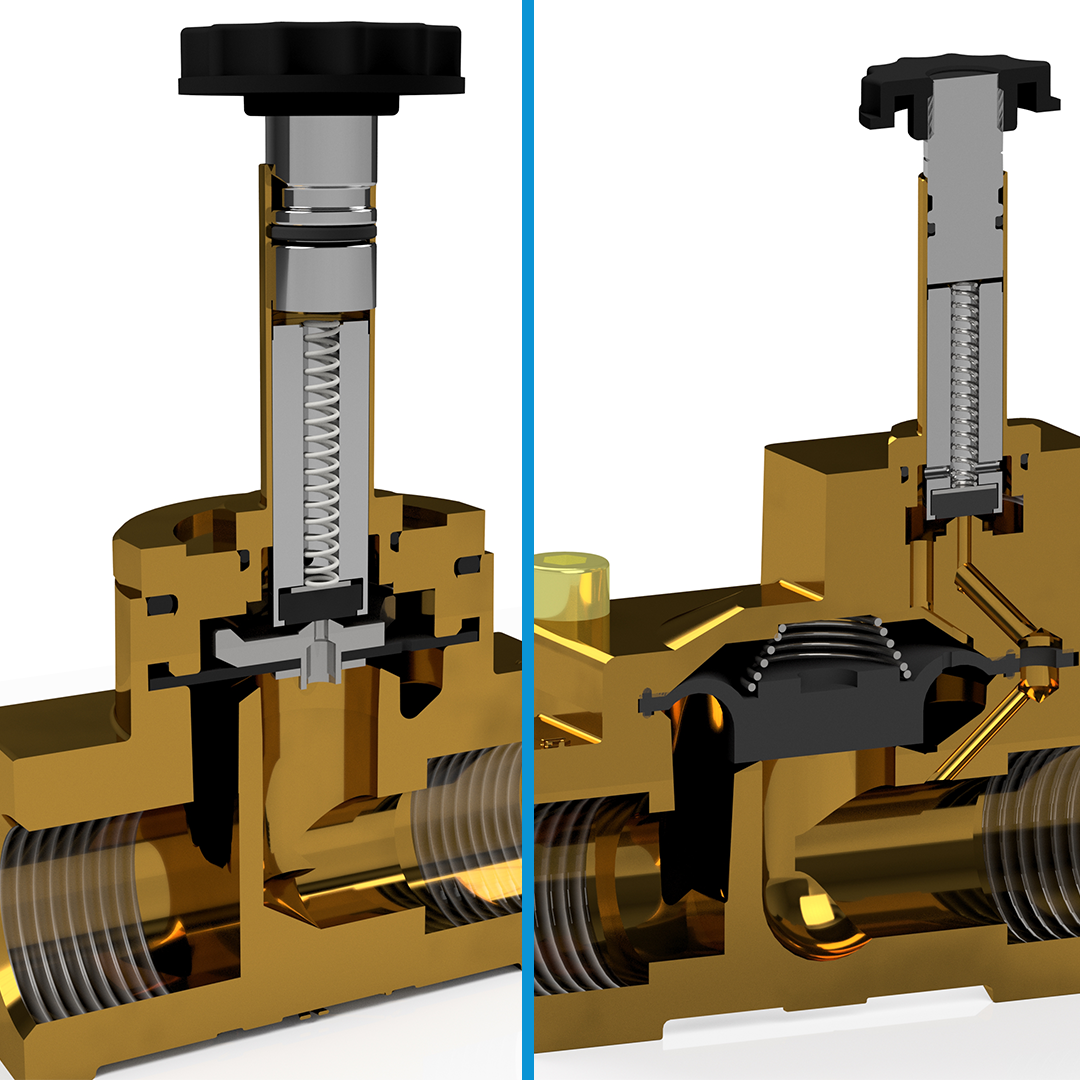
Solenoid valves used in the railway sector are subject to particularly demanding technical requirements. In addition to high mechanical resilience and a long service life, they must also function reliably under extreme electrical and thermal conditions. Typical specifications include:
- a voltage tolerance of ±30%
- ambient temperatures from -20°C to +70°C
- medium temperatures of up to 110°C
In addition, there is a 100% duty cycle in continuous operation, which poses an enormous challenge for the solenoid coil, especially in the worst-case scenario, as self-heating leads to even higher thermal stress.
A particularly critical requirement is that the valve must be able to safely switch the required medium pressure even when the supply voltage is reduced by 30%. This requires a correspondingly strong magnetic force, which can result in higher current consumption and thus greater self-heating of the coil. At the same time, the coil must not overheat when the voltage is increased by 30% - under maximum ambient temperature, maximum medium temperature, and continuous operation. Otherwise, there is a risk of thermal overload, material failure or functional failure.
The design of the solenoid coil thus becomes a balancing act: on one hand, it must still build up sufficient force at low voltage, while on the other hand, it must remain safely within the permissible temperature limits under high voltage and maximum thermal stress. To make matters more difficult, all influencing factors - voltage, temperature, duty cycle and medium - can reinforce each other.
The solution lies in a holistic approach: optimized coil geometries, temperature-resistant insulating materials, improved heat dissipation through housing design and, if necessary, the use of temperature protection mechanisms such as thermal switches are key elements. Only through careful development and validation can valve designs, that function safely and reliably under extreme conditions in railway operations, be created.
The requirements clearly show that solenoid valves for the railway sector are not standard components - they are highly specialized precision elements that must operate reliably under the most adverse conditions.
The series of images below illustrates the effect of a 10% increase in voltage on the surface temperature of the coil. While the coil heated up to a maximum of 93.9°C at rated voltage and an ambient temperature of 20°C, this temperature rose by approximately 10°C when the voltage was increased to 26.4V.
